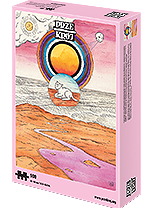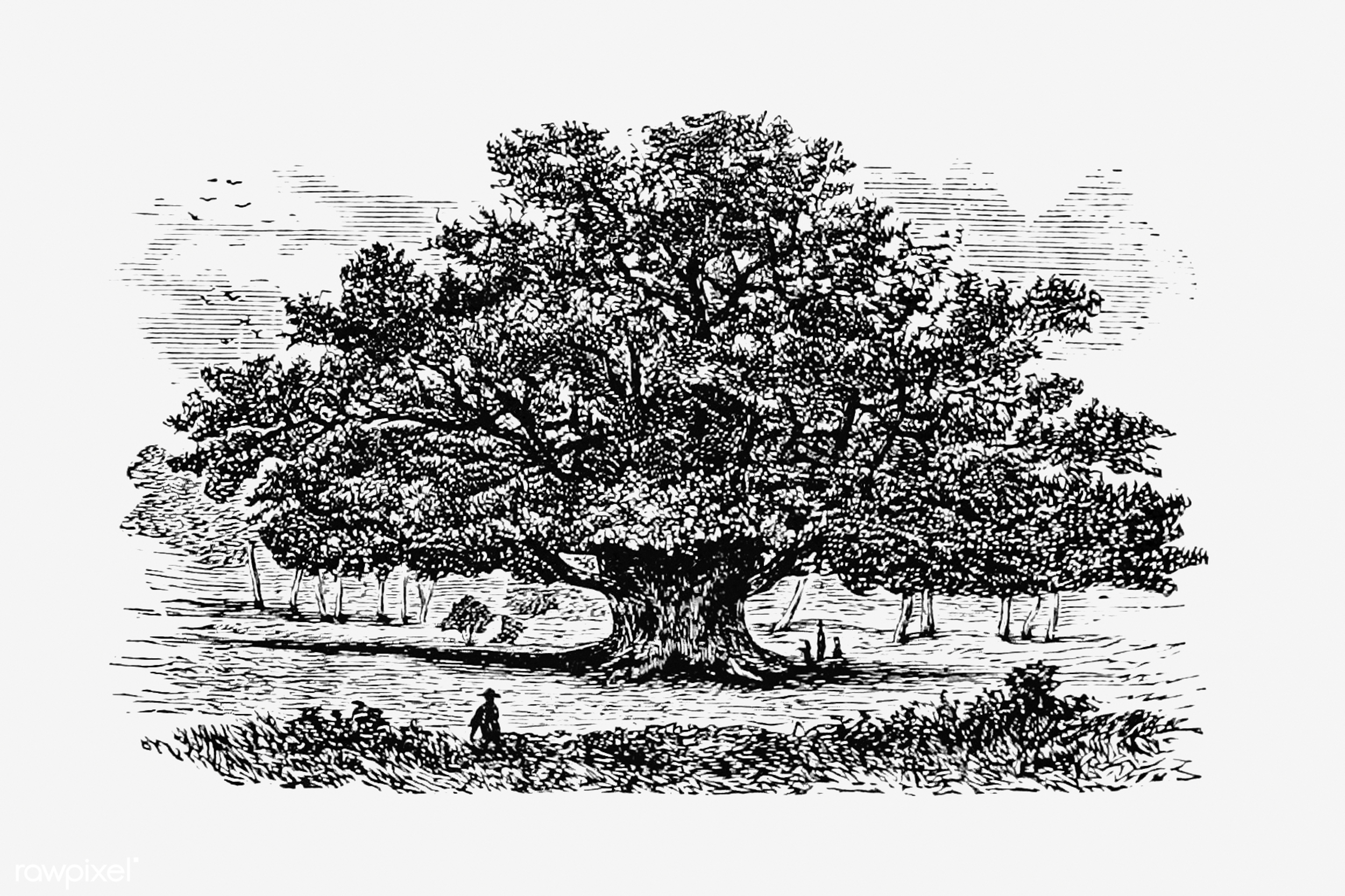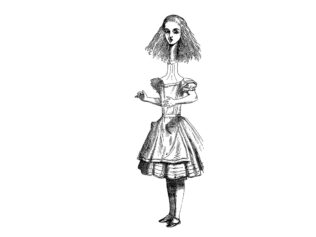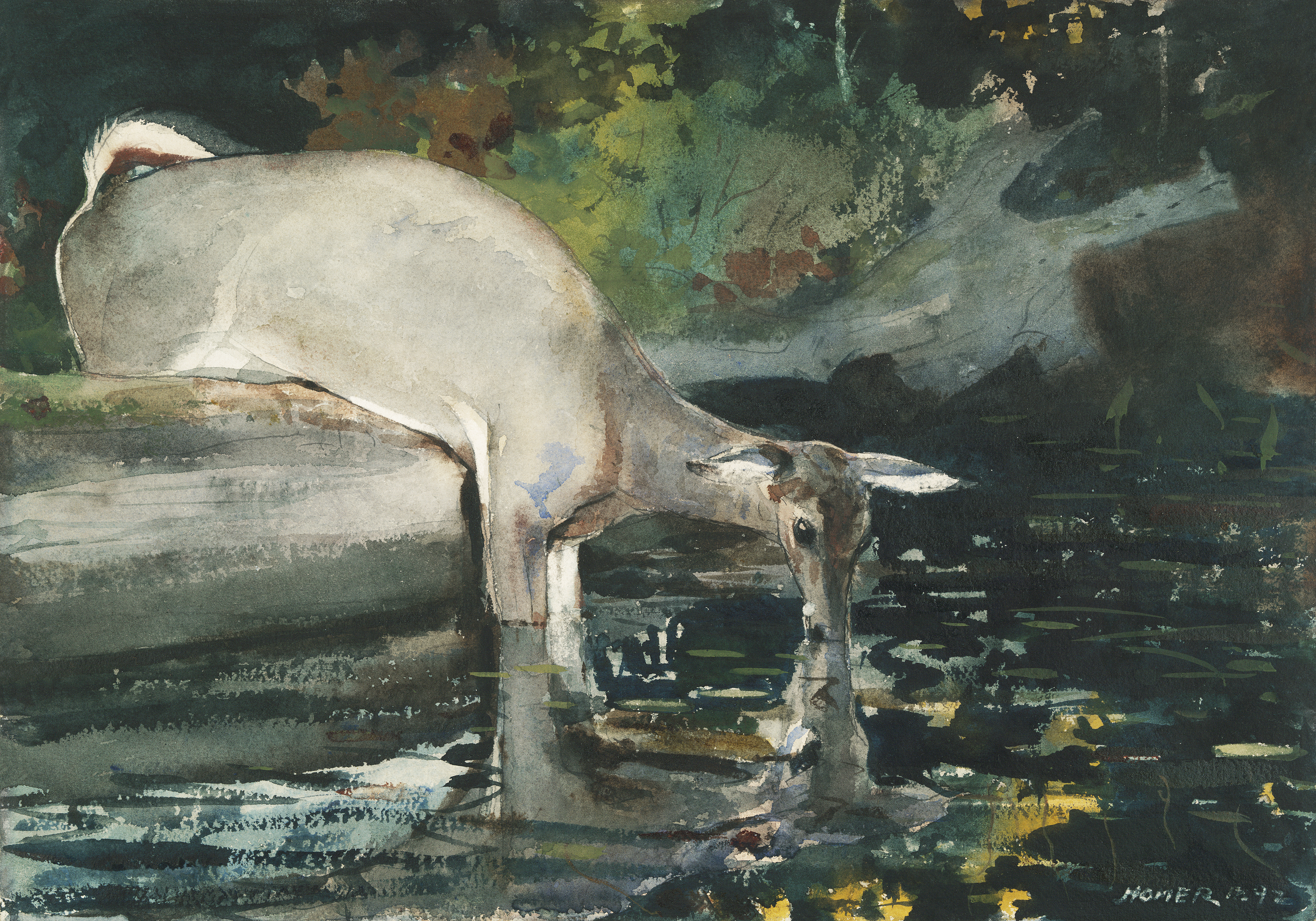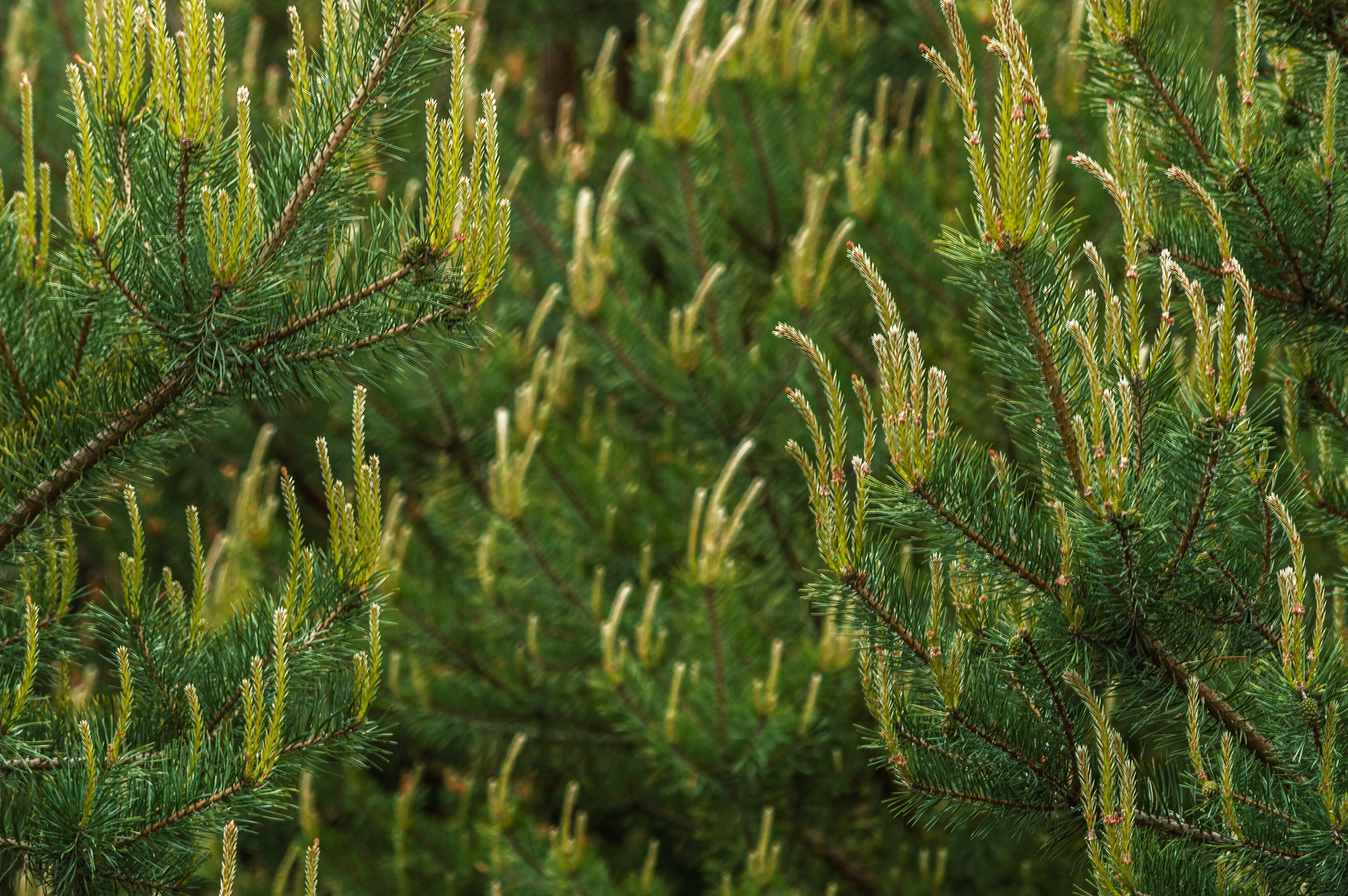
What do we really miss every year before the arrival of spring? The smell and the brightness, or the promise of life that accompanies spring? This promise was once associated both with blood and the warm force of the sanguine temperament – the embodiment of spring and one of the four personality types that was considered most desirable for hundreds of years.
Actually, the same thing happens every year. When the warm season replaces the long, dark winter months, suddenly something changes in and around us. The beam of photons that lights up my wooden floor in the morning takes on a different hue. It has a completely different force and brightness than before, during wintertime. When I look at it, I think of the specific aura of cruelty that follows spring when it invades our little municipal garden on a yearly basis.
First blood
Flushed and burnished, wearing a robe made of prickly twigs, the maiden painted by Jacek Malczewski in 1898 is an adequate personification of spring in the Polish climate. Malczewski authored a whole series of spring-themed paintings (in 1900, 1909 and 1914), but only the first work portrays the characteristic, unsettling aura that accompanies this particular season – presented by Malczewski as a dark, almost vampiric figure – as it enters the post-winter world.
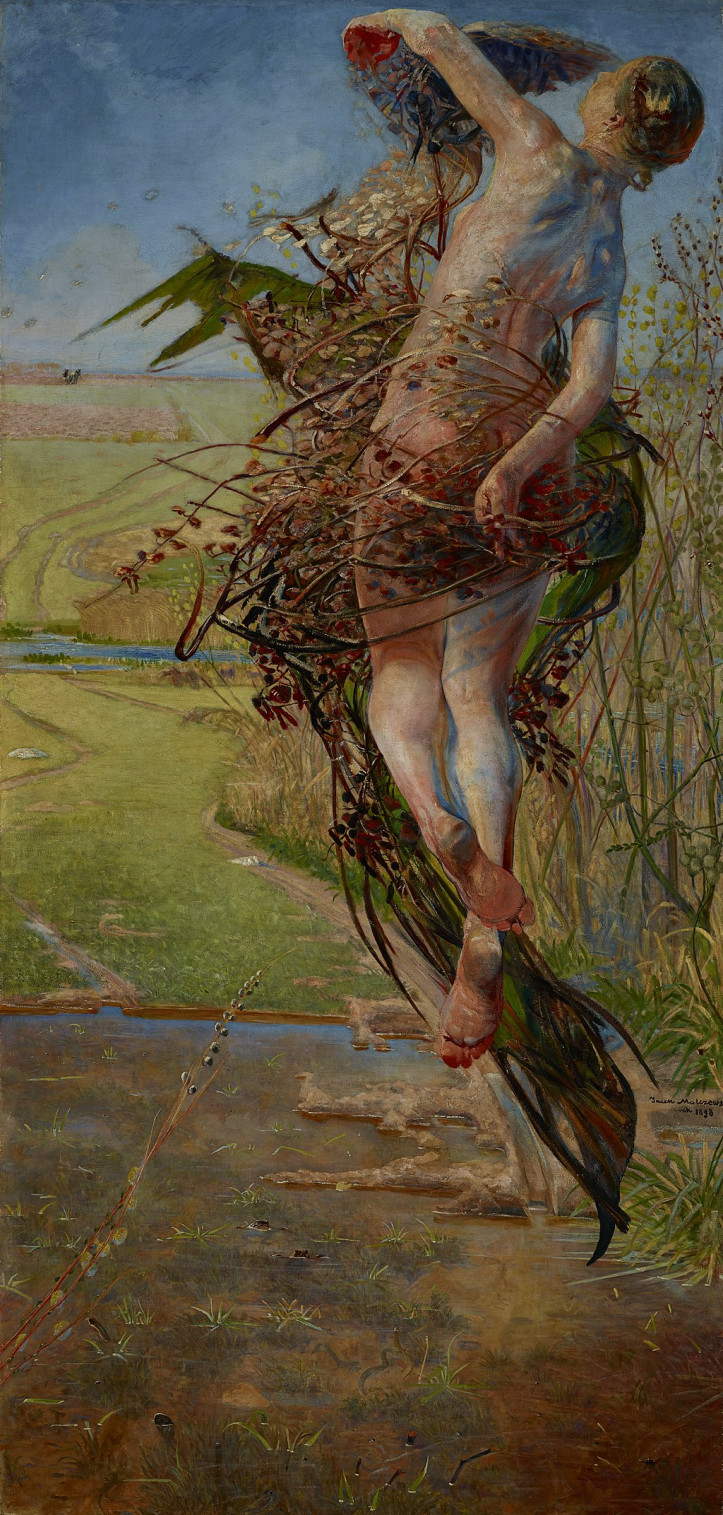
However, spring also has a certain delicacy, since it brings us the necessary palliative of warmth. So do the first sun rays in March (never mind that in April, the fresh grass is once again smothered in snowfall), the light we have longed for in the difficult, dark months. Springtime in temperate climate zones should be our consolation, a new communion with nature after a few months of loneliness. This communion has a certain ambiguity in folk culture. It symbolizes not only solace, happiness and change; it also brings to mind the dramatic atmosphere of Malczewski’s painting. The first moments of spring are a brutal theatre of life: they are supposed to wake up the world, disperse the seeds and reprogram the growth cycle.
No wonder that blood is the attribute of spring depicted in most artworks. The circulation of bodily juices can represent all the features of spring fever: motion, the warmth we long for, intimacy and violence. The Latin word for blood, sanguis, is at the root of most European folk tales about our place in nature’s cycle. Hippocrates’s collection of medical works, entitled Corpus Hippocraticum (it is debated whether he is the sole author of all 70 works included in the book, since other physicians from the island of Kos may have also contributed) is a volume made of multiple scrolls sown together 100 years after his death that included notes on the popular humoural theory. According to the book, four physiological substances circulate in the human body: blood, yellow bile, black bile and phlegm. When in perfect balance, they ensure the body is healthy. Consequently, disturbing this balance leads to various sicknesses and the excess of one humour influences the patient’s character in such a way that he becomes one of the four personality types: sanguine (blood), choleric (yellow bile), melancholic (black bile) or phlegmatic (phlegm).
Under the influence of various philosophies and science, humourism changed with time, but some parts of it survived till the 21st century, becoming an integral part of popular psychology and alternative medicine – an example of its longevity is the theory of the four humours. Today, it is mostly associated with coaching and memes.
Healing is storytelling
If we all know that blood is not “produced from food in the liver”, as claimed Galen, the Roman successor of Hippocrates, why are these ancient concepts so popular nowadays? Why do HR workers and interviewers rely on findings from over 2500 years ago, and why is Hippocrates called the father of medicine, even though he never saw blood flow inside a man (historians doubt he ever conducted an operation, since religious taboos forbade such practices)?
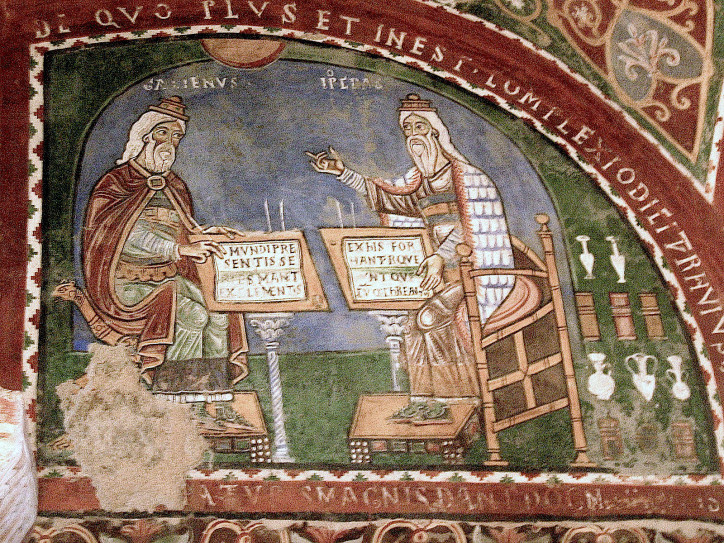
The value of Corpus Hippocraticum lies not in the knowledge it conveys, but in the way it tells its own story about humanity. The book sets the human organism against a rich background – nature – that represents the stages and symbols of human life. Hippocrates and other physicians from Kos were ahead of their time, because they were among the first to notice the importance of the environment we live in. While treating their patients, they analysed the larger context first, rather than the body and its physical condition – the place of the body in nature, another live organism, was crucial. Unlike the 18th-century anatomists, ancient Greek physicians didn’t know where blood came from and what pumped it through the body, but they had the upper hand when it came to the planetary perspective they adopted, contrary to contemporary doctors with scalpels – so much more than specialized knowledge about the internal organs. As practitioners of the ancient, holistic formation, they had to be physicians, astronomers and philosophers all at once.
Even though contemporary medicine analyses each body cell with electronic precision, it doesn’t care much about the patient’s daily environment or their relationships with other people. The world that nourishes us, calms us down and propels us into action can also make us sick, but it means little in contemporary diagnostics. However, the Greek physicians claimed that humans and their physiological microcosms are part of nature’s cycle, with the body being its written story that gets older with time. We are the history – the individualized history – of the circulation of emotions and matter. 21st-century medicine forgot about this fact and may hit a wall some day, because it does not understand that our organs – apart from being clusters of cells and fluids – are “repositories of emotions”, a term used by the cardiologist and writer Sandeep Jauhar (who was recently interviewed by “Przekrój”).
Sanguine personality urgently needed
Meanwhile, nature is slowly detonating change outside. I see ticks ballooning in my cat’s fur, a big, black fly waking up in the plastic window frame, and I contemplate the empty corkboard in my son’s preschool with ‘Spring’ written at the top – it is a space that exudes the promise of all the forthcoming energetic scribbles and drawing.
The theory of four temperaments associates spring with stronger, more harmonious individuals than the autumn melancholics or the unstable choleric type connected to the summer heatwaves. Trying to digest the crazy amounts of knowledge I find in various books on the history of medicine, the work of Frederick Copleston and online coaching textbooks, I also get the impression that the sanguine temperament is vicious; well-adapted to take what it wants. It exercises violence in many creative ways – the sanguine-type personality is sought after by community centres and creative teams in corporations. This prized game ‘bites’ in full stride with a smile and a wink, because sanguine individuals are the sensual type, cheerful and brisk. Shakespeare described some of his characters as ‘brisky’ and I couldn’t find a better word for the springtime, liberal, sanguine individual in any of my sources.
The sanguine personality type represents every possible beginning in the cycle of life and nature: either childhood or early adolescence (in Renaissance calendars, these beginnings are personified by young men who resemble the bard Dandelion, a character from the fantasy book series The Witcher). The sanguine temperament also symbolizes mornings and spring itself. Its zodiac signs are Aries and Taurus, among others, while its ruling planet is Jupiter. Even at the turn of the 19th century, the spirit of humourism led people to believe it would be best to find “the blue eyed and brown- or flaxen-haired” individuals among neighbours, students and young women. The same claim was made by the editors of Szkółka powszednia [The Daily School], something between a manual and a lifestyle periodical, published in Poland. People with sanguine personalities were also supposed to be “red faced” and “most jolly” (Shakespeare again), and their temperament would indicate how lively and high-spirited they were.
Most of the texts I read about the sanguine personality-type are so similar to one another that they seem to come from a single ancient source. There is an abyss between this source and late modernity, enamoured of irony and humorous images. Not to mention the entirely different attitudes towards nature. Before, it was easy to identify yourself as a sanguine individual, when the cycle of seasons was regular and simple. Today, it isn’t: winter is increasingly warm, spring is colder, and so on. The world doesn’t look like something out of a Pieter Breughel painting anymore: fierce winters with ice-skaters and sunny spring landscapes with people piling up timber after a short-lived storm. Can associations formed 2500 years ago still be meaningful in a world where nature has almost ceased to exist? It’s a good question, but where should we look for the answer?
One of my primary sources was A History of Medicine by John Kaisermann, Milos Pawlowski and Yavor Mendel.

